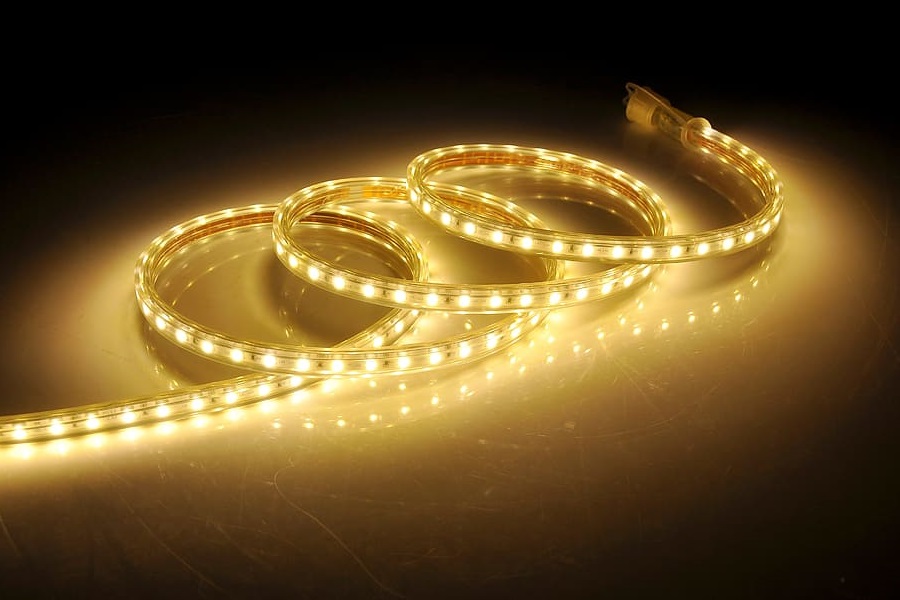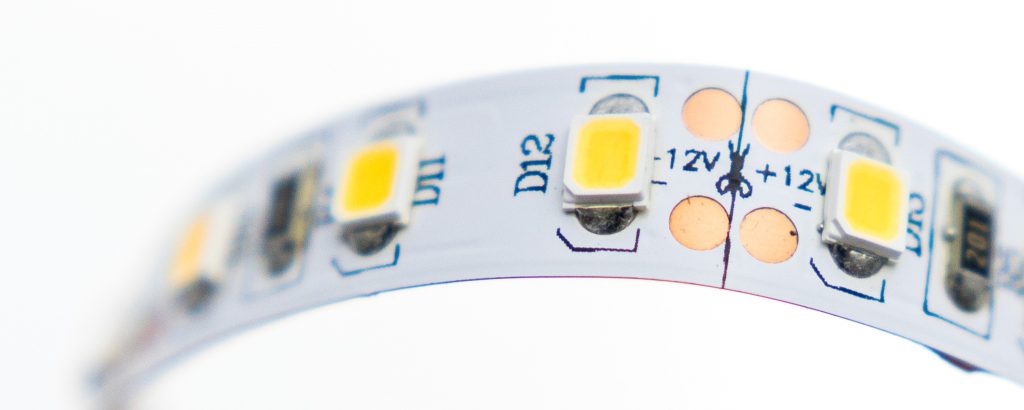Shedding Light on LEDs: An Enlightening Overview
A light-emitting diode, more commonly known as an LED, is a robust and versatile semiconducting light source that has revolutionized the world of lighting. Invented in the early 20th century and commercialized in the 1960s, LEDs have opened up new horizons for lighting applications due to their efficiency, longevity, and environmental friendliness. Unlike traditional incandescent or fluorescent lights that rely on heated filaments or gas-discharge processes, respectively, LEDs emit light by a process called electroluminescence.
This unique mechanism of action allows for superior control over light intensity and color spectrum while minimizing energy waste. LEDs are omnipresent today; they find usage in a wide range of applications, from tiny indicator lights on electronic devices to large outdoor billboards and screens.
They are also extensively employed in various sectors such as automotive, telecommunications, medical devices, and even horticulture, to name a few. Their flexibility in size and design combined with their inherent energy-saving properties make them an attractive choice for an array of lighting solutions.
Navigating Electroluminescence: The Working Mechanism of LEDs
The central operating principle behind light-emitting diodes (LEDs) is electroluminescence, a phenomenon where certain materials emit light when an electric current passes through them. The heart of an LED is made up of layers of semiconducting material. When current flows through these layers – specifically across the junction between two types – it stimulates electrons to move across this junction.
As these excited electrons drop down from a higher-energy state to a lower one within the semiconductor’s atomic structure, they release their excess energy as photons – particles of light – resulting in the glowing effect we see from an LED lamp. The color of light produced is determined by the specific semiconducting material used in the diode, thereby allowing for a vast spectrum of hues from deep ultraviolet to far infrared.
Unlike incandescent bulbs or fluorescent lamps, this electroluminescent process does not involve any heat production, making LEDs more energy-efficient and longer-lasting. This cool operation, coupled with their low power requirement, significantly extends their lifespan, often lasting thousands of hours longer than traditional light sources.
The Role of Electric Current in LED Operation
The brightness of an LED is closely tied to the amount of electric current flowing through it. In essence, when more current passes through an LED, it shines brighter and vice versa. This direct relationship between current and brightness allows for precise control over the intensity of light emitted by LEDs – a key feature that has been exploited in many modern lighting technologies, such as dimmable LED lamps and dynamic backlights in televisions.

However, exceeding the recommended current limit can negatively impact an LED’s performance and lifespan. Overdriving an LED with too much current can cause overheating and potentially lead to premature failure.
Understanding this balance between achieving desired brightness levels without compromising reliability forms a critical aspect in the design and application of LED-driven systems. In addition to controlling brightness levels, electric currents also play a significant role in defining the color rendering properties of LEDs.
By finely tuning the current supply, manufacturers can manipulate how faithfully color tones are reproduced under an LED’s light – a parameter known as Color Rendering Index (CRI). Thus, managing electrical currents is key not only for effective lighting but also for achieving accurate visual perception under artificial lighting.
Understanding the Concept of Current: The Invisible Force
The concept of current remains one of the most fundamental principles in the realm of electronics. At its core, electric current denotes a stream or flow of electric charges, often facilitated by the movement of electrons. This invisible force galvanizes our electronic devices and is measured in amperes (A).
Current is generally created when a voltage difference exists between two points in an electrical circuit, prompting electrons to migrate from one side to the other. Underscoring its pervasiveness, electric currents are present everywhere around us – from powering our LED bulbs to charging our smartphones.
However, their magnitude can vary significantly based on specific factors such as resistance levels and voltage supplied. This brings us to another fundamental principle in electronics: Ohm’s Law.
Ohm’s Law: The Trinity of Electricity
A cornerstone of electronics and physics alike, Ohm’s Law establishes the integral relationship between three primary electrical quantities: voltage (V), current (I), and resistance (R). In its simplest form, Ohm’s Law dictates that the current passing through a conductor between two points is directly proportional to the voltage across the two points and inversely proportional to their resistance. This cardinal trifecta can be mathematically expressed with an elegant simplicity: I = V/R.
Herein lies a vivid representation that elucidates how manipulating one element invariably affects others. Increasing voltage invariably augments current unless offset by increased resistance.
In practical terms, consider an analogy with water flowing through a pipe. Voltage could be thought of as water pressure providing impetus for movement, whereas resistance would equal obstacles impeding this flow – like rust or debris inside our hypothetical pipe – and finally current analogizes to the actual volume or speed of water passing through.
The Impact of Current on LED Luminosity
LEDs, or light-emitting diodes, despite their growing ubiquity in modern day-to-day lives, are often shrouded in technical jargon that may at times seem impenetrable. However, the central working principle behind LEDs and how they produce light is enthrallingly straightforward. An LED works by allowing current to flow from its anode (positive side) to its cathode (negative side).
As electrons move through the semiconductor material, they fall into “holes”, releasing energy in the form of photons – light – in the process. This process of light production – electroluminescence – is intrinsically tied to the current flowing through the diode.
The brightness of an LED is directly proportional to the magnitude of current running through it; a higher current forms more electron-hole pairs, which emit more photons and thereby produce more intense light. While this relationship seems straightforward enough – more current equals brighter light – it does come with caveats.
Too much current can cause excessive heat buildup leading to thermal runaway – a destructive chain reaction that can potentially damage or even destroy an LED. Thus, striking a balance between adequate brightness and avoiding thermal pitfalls becomes paramount for optimal LED performance.
Moreover, unlike traditional incandescent bulbs or even fluorescent lights that simply cease operation below certain voltage thresholds (“brownout conditions”), LEDs continue to emit dimmer light until virtually zero operating voltage – an attribute allowing them unprecedented versatility across wide-ranging applications, including low-power devices and systems. To conclude this section, it is safe to say that understanding electric currents – their generation via voltages and modulation via resistances – is essential not only for appreciating how LEDs function, but also for leveraging their full potential towards myriad applications, both existing we know about today as well as those yet unfathomable awaiting us in the near future.
Delving into the Illumination Threshold of LEDs
Light-emitting diodes, commonly known as LEDs, display an intriguing characteristic when it comes to weak current operation. It necessitates a thorough understanding of the minimum threshold for LED lighting. The threshold is defined as the minimum level of current necessary to generate perceiveable light from the diode.

Interestingly, some LEDs can illuminate under weak currents as low as 1 milliampere, though this can vary based on several factors. LEDs come in a variety of colors and sizes, and these factors can influence their glow under weak currents.
For instance, red LEDs generally require less voltage and hence lower current to emit light than blue or white ones. Meanwhile, larger LEDs typically require more power due to their greater capacity for light emission.
Moreover, different LED models that are designed for specific applications or designed by different manufacturers may have varying minimum thresholds. Therefore, there is no universal answer to this question, but essentially, yes – many LEDs can indeed glow even at low levels of electrical current.
The Influence of Weak Currents on LED Functionality
The relationship between applied current and light output in an LED is direct yet non-linear; this means that variations in current do affect the emitted light’s intensity but not proportionally so. As electric current decreases below the recommended operational level for a specific LED type or model, emitted luminescence diminishes until it reaches a point where it is no longer visible to human eyes. This unique functionality has performance implications for LED longevity; operating them at weaker currents than their rated specifications can significantly extend their lifespan because reduced energy throughput minimizes thermal stress on their semiconductor junctions.
A Glimmer in Darkness: Experimenting with Weak Currents
An experiment can be performed to observe the behavior of LEDs under weak currents. This can be done using a simple setup consisting of a LED, an adjustable power supply, and a series resistor for current control. The power supply’s voltage can gradually be decreased while observing the LED’s light emission.
When conducting this experiment, safety precautions like using protective eyewear, ensuring correct circuit connections, and avoiding electrical shorts are paramount. Once data on light intensity at different current levels is collected, it can be analyzed to validate the theory that LEDs can glow even under weak currents.
Shining Light on Practical Applications and Implications
Weak current operation has beneficial use cases in LED functionality. Low-power devices or systems such as wearable technology, sensor networks, and Internet of Things (IoT) devices often operate at lower voltages and thus minimal currents; here, low-threshold LEDs can provide critical illumination with minimal power draw.
In lighting scenarios that require subtlety over brightness – mood lighting or night lights, for instance – weak-current-operated LEDs are ideal. Also noteworthy is the energy efficiency implications: operating LEDs at lower currents extends their lifespan while also conserving energy.
Unveiling Advanced Concepts: Quantum Efficiency and Color Rendering
An advanced concept related to low-current LED operation is Quantum Efficiency (QE). QE describes the efficiency with which an electron-hole pair recombines to produce a photon; essentially, it tells us how many photons we get out per electron put in.
Even under weak currents, if QE remains high, an LED will continue to emit light effectively. In terms of color rendering index (CRI), lower current operation usually results in a slightly higher CRI due to decreased self-absorption; this means colors illuminated by these low-current-operated LEDs appear more natural.
A Bright Conclusion: Can LEDs glow even in a weak current?
LEDs do have the ability to emit light even under weak currents. Their functionality in these conditions opens up innovative applications and benefits such as energy efficiency and longevity. While their light output diminishes with reduced current, it’s exciting to think about how this unique characteristic can be harnessed in the design of future LED technologies.
You may also be interested in the following posts:
